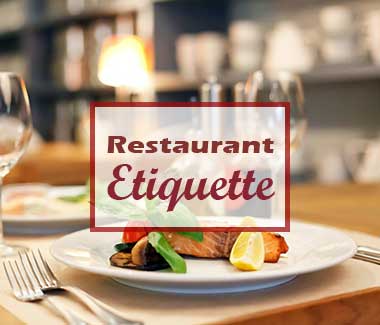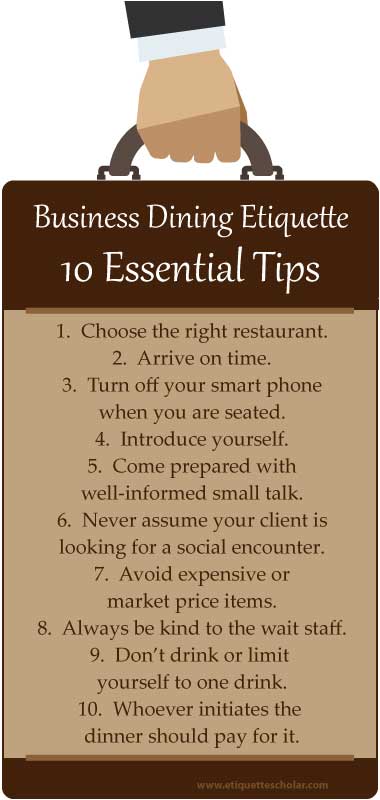Seating Etiquette
Table Manners Guide
Cocktail Glasses
Do not bring a cocktail glass to the dinner table. The glass crowds the place setting. In addition, the taste of spirits may counteract the flavor of wine served with the meal. Leave the cocktail glass in the room where cocktails are served.

Food Service Etiquette
Where to Sit
Place cards identify the places people are to sit; they are used to eliminate confusion when more than six people dine together. If there are no place cards, the hostess tells the dinners which seat to take or requests that they determine their own places.
The place of honor at the table is to the right side of the host because most people are right-handed.
Unless protocol is being observed, other guests should not be seated according to their importance.
Beyond these few guidelines, guests should be arranged in the way that the host feels will be most congenial for conversation.
In a private residence the hostess should suggest where to leave a purse, purses should not be brought to the table. In a restaurant or public place it is held on the lap or placed close at hand.
How Long to Hold Dinner for a Late Guest
Dinner should be delayed no more than 15 to 20 minutes to accommodate a late guest's arrival.
Seating for Business Dining
Seating arrangements are made by the host. It is never correct for guests to shift name cards or take a seat at a table other than one to which they have been assigned. It is a company's prerogative to decide how to seat its guests.
Who Sits Where at a Business Lunch and Dinner
When entertaining business associates at home, the head seats, at either end of the table, are taken by the host and hostess.
Unless protocol is being observed, other guests should not be seated according to their importance. (If protocol is being observed, then everyone present understands the seating arrangements.)
At a business lunch or dinner where spouses are not present, guests are more likely to be seated in accordance with their importance.
Ranking Your Guests
And, how, you may wonder, do you go about ranking your guests? It's not so difficult as it sounds. Here are guests who would be honored:
Door Lists
Companies may, for many reasons, screen admitted guests to a party or event. A door list is usually used for this purpose. The company may require guests to present an invitation to gain admittance, but those can be copied. For extra security, a door list has proven to be a good way to enhance security.
Several people may wait near the door with the list. Guests state their names and are allowed to enter.



